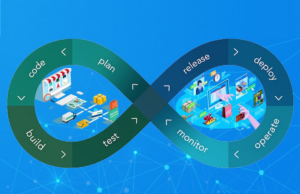
Types of Software-Defined Storage
Software-defined storage (SDS) is known to be a form of storage virtualization. This storage solution significantly helps improve the flexibility and simplicity of data storage management with the introduction of a software layer that is independent from the physical storage hardware.
Earlier, Anand Jayapalan had spoken about how SDS solutions facilitate a higher level of freedom in terms of managing the way data is stored and retrieved.
Being a software-based architecture, SDS helps remove co-dependency between applications and the underlying hardware. It tends to act as a layer within the IT infrastructure that operates on top of commodity resources instead of through brand-specific, costly hardware. Servers and disks can be mixed and matched, without each of them needing their own dedicated software.
In a similar manner, application software can also be changed or updated without a full storage hardware overhaul. Software-defined storage tends to virtualize the management of storage requests, instead of the storage itself. Through virtualization, it can enable features like snapshots, backup, deduplication, automated provisioning and replication.
Software-defined storage encompasses a range of technologies that tend to separate the storage management and services from the underlying hardware.
Here are a few of the most common types of software-defined storage solutions
- Software-defined storage appliances: Such virtual appliances or software applications run on virtual machines or standard servers, and can provide a variety of storage services, like replication, data reduplication, as well as thin provisioning.
- Virtual SAN (VSAN): Virtual SAN is a type of SDS that tends to aggregate local storage from several servers in a cluster in order to develop a shared storage pool. It allows companies to make use of direct-attached storage (DAS) in a virtualenvironment without requiring traditional shared storage arrays.
- Scale-out file systems: Such distributed file systems are able to scale horizontally with the addition of more nodes to the cluster. They tend to provide a unified name-space for the storage and management of files across multiple servers, allowing high performance and capacity expansion as needed.
- Software-Defined Object Storage (SDOS): SDOS solutions tend to be specialized SDS systems that effectively cater to the requirements of object storage. It comes with a variety of features like lifecycle management, data protection, data replication and multi-tenancy.
- Software-Defined Storage for Block Storage: Such solutions abstract the management of block-level storage and provide features like data replication, thin provisioning and snapshots, while running on standard server hardware.
- Software-Defined Storage for Storage Area Networks (SAN): SDS solutions for SANs facilitate centralized storage management and virtualization of SAN resources, thereby making it simpler to manage, provision and optimize storage resources in a SAN environment.
- Software-Defined Storage for Cloud: Certain SDS solutions tend to be specifically designed for cloud environments. It makes it easy for enterprises to build scalable and flexible storage systems in the cloud while abstracting the underlying infrastructure.
- Hyperconverged Infrastructure (HCI): Even though such solutions are not solely focused on storage. HCI does integrate compute, storage, and networking into a single, software-defined platform. It generally includes SDS capabilities for managing storage resources in an efficient manner.
Earlier, Anand Jayapalan had spoken about how each and every type of software-defined storage solution has its strengths as well as is suited for different use cases and environments.






